We are not experts in marketing strategy creation, but what we are really proficient with is translating marketing strategies into Magento store features.
We are not experts in marketing strategy creation, but what we are really proficient with is translating marketing strategies into Magento store features. Some of those features are easy to implement, since they are a part of Magento’s core functionality, and all you need to do is configure them while others require a bit more research and even some architecture planning. In this article, we are going to cover marketing features that have proven their effectiveness in time.
Built-in marketing features in Magento
In just about every other article about Magento, you’ll read that Magento is like a gift basket for online merchants: it has a lot of nice stuff inside, and in particular it concerns marketing features. So, let’s take a closer look.
Coupons
Customers love coupons. Whether you want to attract new or repeat customers, promote not-so-popular items in your inventory, or on the contrary items that are new – offer coupons. In Magento you can offer discounts or free shipping to your customers on your own terms: for specific periods of time, for specific customer groups, emails to customers, or create in-store coupons for mobile users etc. To enable coupons in the online store, you simply follow a few steps in the admin panel.
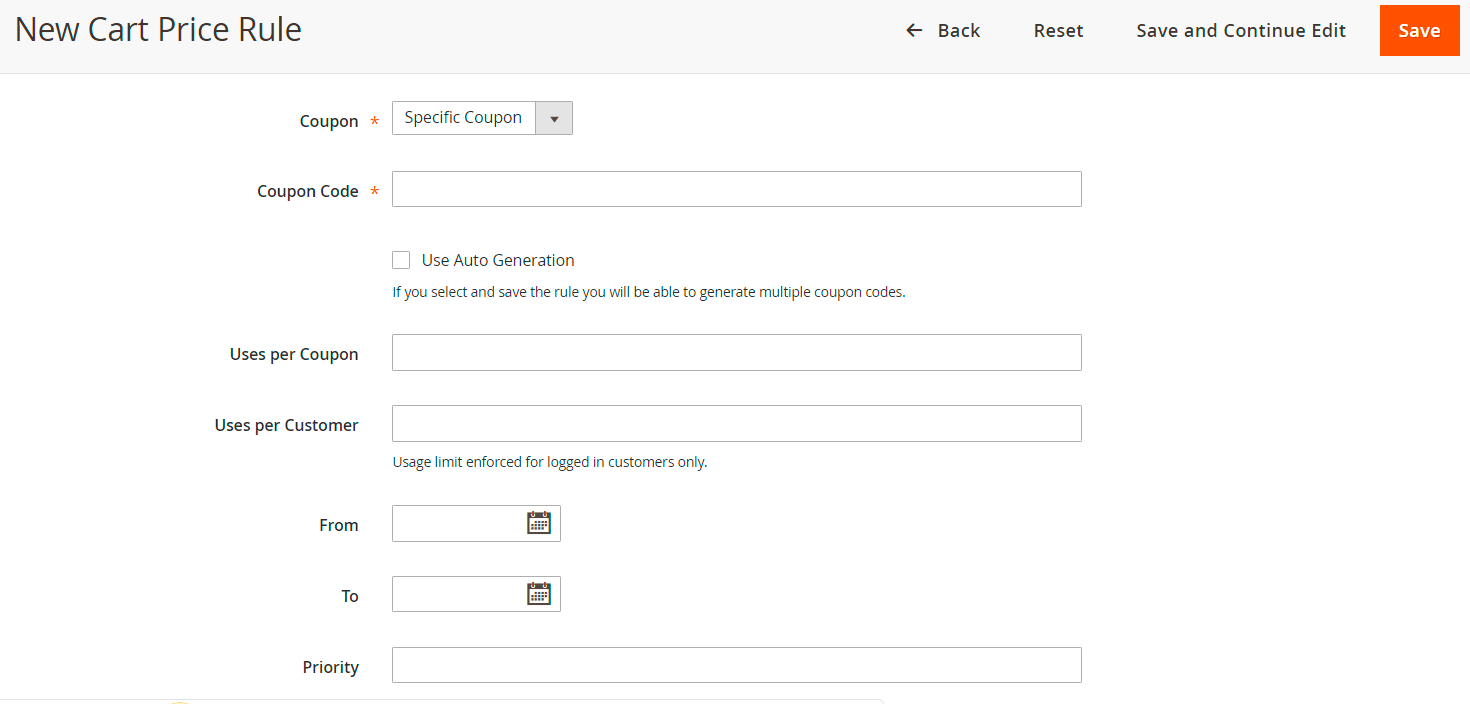
Tier pricing for quantity discounts
This is also a very effective default Magento feature that helps online merchants to reward customers that order large amounts of goods by offering them a reduced price. Magento enables you to configure tier-pricing for each particular product, even apply product tier pricing to a specific store view (let say only for Spain) or a particular customer group (let us say again for your beloved wholesalers).
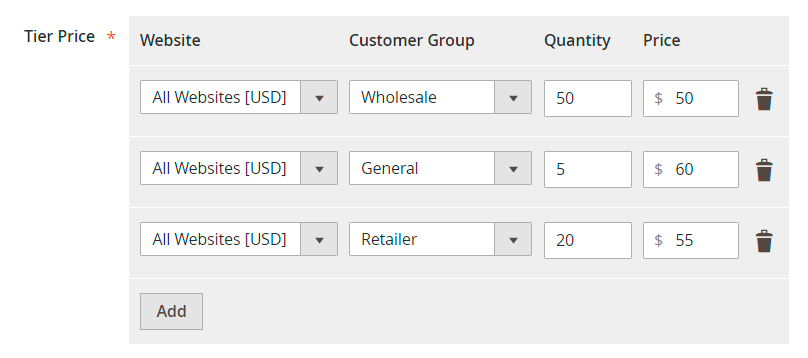
Using the tier-pricing feature you can also define a special price of a product for selected customer groups if necessary. Along with coupons, special pricing is a widespread, classic technique that perfectly works in ecommerce. Just input “1” in the Quantity field and the corresponding price of the item, select a customer group, and hit the Save button. And, voila – special price is added.
In the admin area the interface looks like this:

On the storefront you’ll see the following picture:
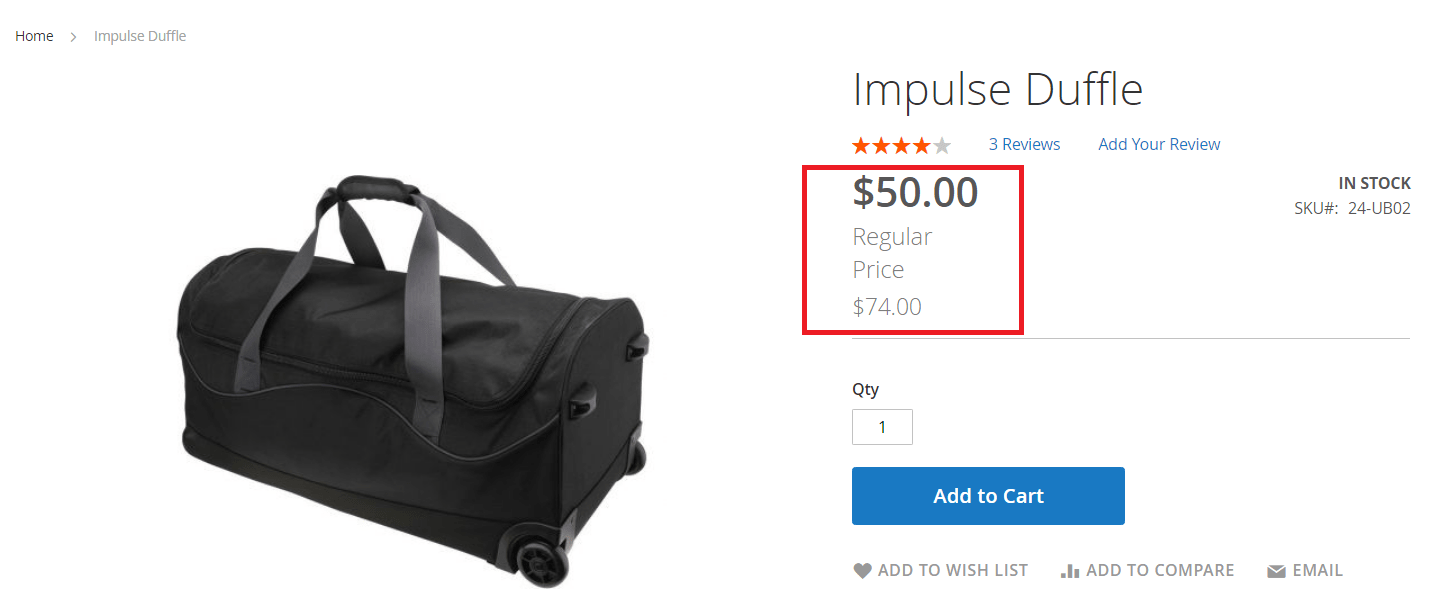
Related products, up-sells, cross-sells
Some customers love to have alternatives, some customers love hints, so why not help them and address these needs? Simply offer product suggestions based on the product they are viewing or buying, and you will definitely see some changes in the sales numbers.
Without any magic and even without additional Magento development, you can use any of these native Magento features (or all at once, it’s up to you): related products, up-sells, and cross-sells. Though these three serve the same goal, there are some differences between them.
Related products – these are the products that are offered on the product page and are aimed at encouraging customers to buy items in addition to the selected one, not instead. It can be a product from the same category or a supplementary product. The great thing about related products is that a checkbox is located near each item to make it even easier for customers to add them to the cart.
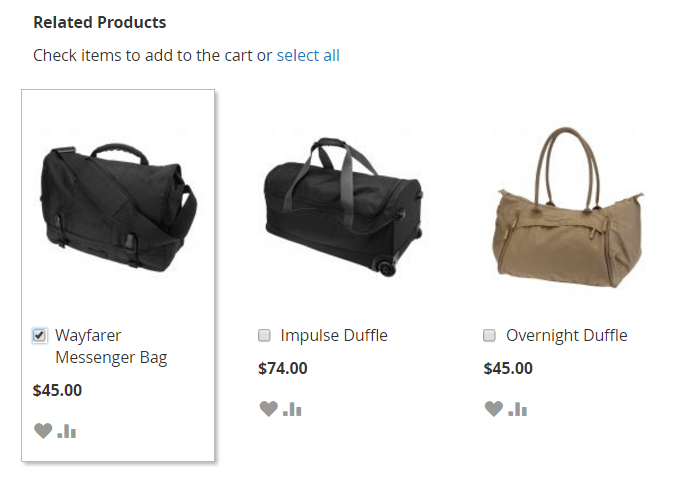
Up-sell products can also be found on the product page. These are items that ideally can be bought instead of the selected product. Usually these are more expensive versions or items with higher margins. This feature is rather built for online merchants, but works fine for customers who prefers to buy the best of the best products in the category.
Cross-sells are one more attempt to increase order amount on the shopping cart step. The idea behind cross-sells is to encourage customers to buy products that they had no intention to buy. Not all the customers overcome the harsh test of cross-sell products.
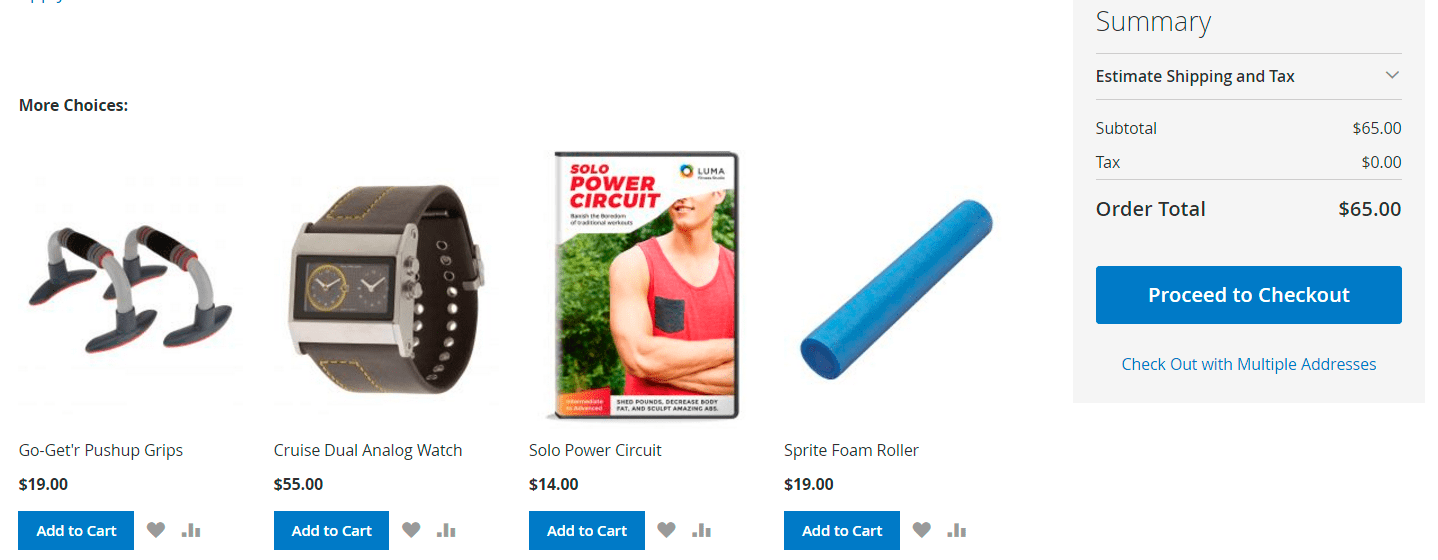
Newsletter emails are a favourite among customers method to receive information about offers, new stock notices, news etc. And, one of the most effective ones in terms of sales. According to Newletters2Go, email marketing is 40 times more effective than Facebook and Twitter together (and social channels are pretty popular in the recent years) so not using native newsletters functionality in Magento, as we believe, is one of the deadly sins of ecommerce.
To unleash the power of newsletters in Magento you can do so in the admin panel. There you can create newsletters for any of your marketing campaigns. If you have some proficiency in HTML, you can add the code to the template content part and arrange it the way you want. If not – use WYSIWYG editor. It will not only give you that flexibility that coding gives, but still enables you to create simple, and appealing templates.

If you are not a coding magician, but want to have more advanced newsletter options, Magento can always be integrated with a 3rd party newsletter system like MailChimp, another favorite among email marketers.
Before creating a newsletter email, we recommend exploring the competitor’s activity, finding references, and analyzing best practices in Pinterest, Canva, and Email Gallery. Besides, you could find additional valuable insights and inspiration in the article published on Best Designs, where there are dozens of responsive email design examples for each type of newsletters, such as welcoming or cart abandonment ones.
It may not be an entire list of built-in marketing features, but implementing these ideas above will positively affect your sales when planned and done properly.
Extending Magento marketing functionality
Despite really decent marketing functionality, there are several features that you won’t find in Magento’s default handbag, but that may work perfectly for your store’s marketing strategy.
Blog
Blogging generates traffic. Blogging helps customers learn more about your company and products. Blogging entertains customers. Blogging educates them. Do you need some more reasons to add a blog to your Magento store? 🙂
Depending on how much you plan to blog and how flexible and rich blog functionality should be, you can select between two options: using a blog extension to the store or integrating the online store with WordPress. Each of the options has its advantages and disadvantages that we have comprehensively covered in our article “Blog on Magento: Extension vs WordPress Integration”
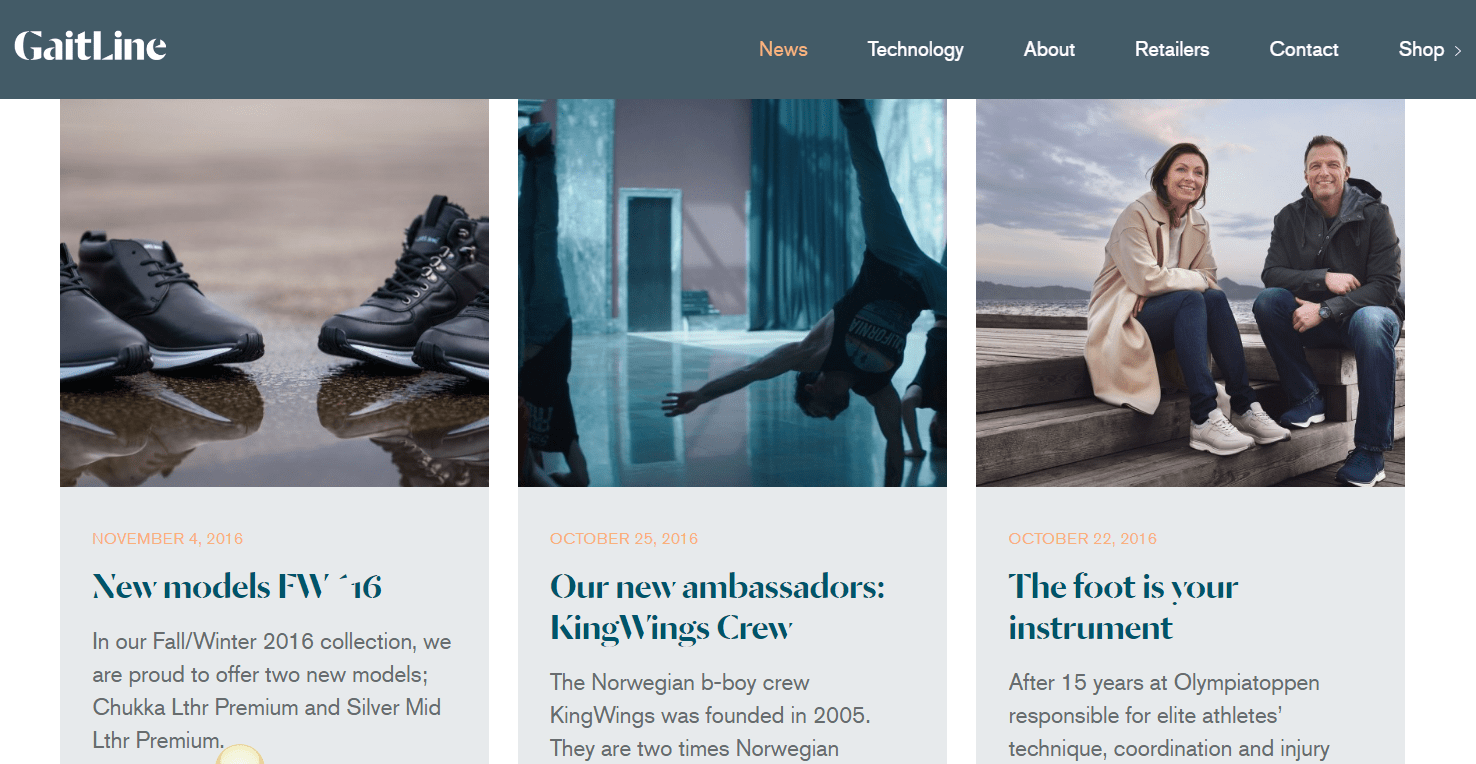
Loyalty programs and reward points
Acquiring new customers is from 5 to 25 times more expensive than retaining the original ones. That’s why loyalty programs and reward points that keep customers coming back are so popular among ecommerce merchants. On Magento Connect, the official extension marketplace, there is a crazy number of extensions for reward points – more than 30. Most of them have a similar principle – customers are rewarded for valuable actions: successful registration, order placement, writing product reviews, subscribing for newsletter etc. and in return, they gain points that can be spent on discounts, free products etc.
Just look at how Gongshow Gear implemented a reward points program on their site. It’s not only a marketing algorithm behind this program, there is spirit behind it too. From the very beginning Gongshow Gear invites you to join their club, become a part of something big, and spread the healthy lifestyle. And, you know what. It feels tempting. At least for us.
Customers earn points at almost every action in the store: registration, first order, product review, newsletter registration, sharing products on social media etc.

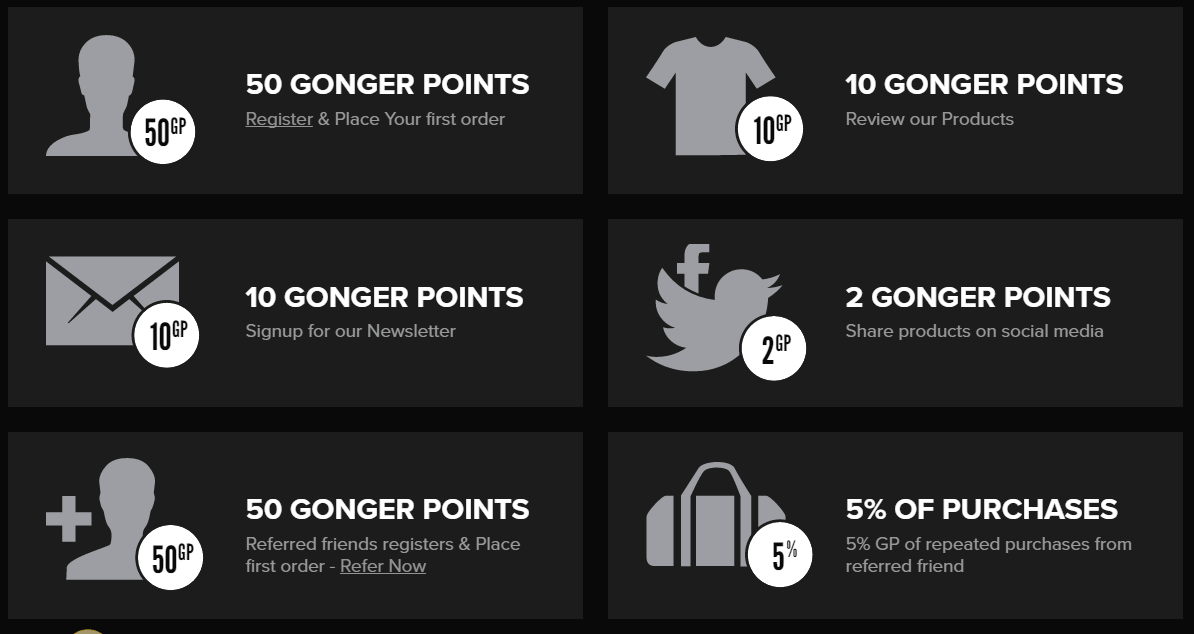
To implement this loyalty campaign, Gongshow used the Sweet Tooth Rewards solution. This is a paid service that can be integrated with your Magento store through a free extension. We have used it a couple of times on our projects in the past, and were satisfied with the overall result; our customers were too. One thing you have to keep in mind though, is that there are monthly fees that you have to pay.
If you want to avoid monthly payments, you can select one of these one-time-installed extensions: Customer balance & reward system or J2T reward points.
Cart Abandonment Notifications
According to the Baymart Research Institute the average online shopping cart abandonment rate is 69%. That is a huge number. But the fact that customers have abandoned their carts doesn’t necessarily mean that they do not want to buy, at least not always. Sometimes websites crash, or customers forget to complete a purchase. Whatever the reason behind cart abandonment, it is definitely worth a try, for the sake of your business, to send potential customers follow-up emails notifying them about not completed orders or abandoned carts. An even more effective way to encourage your customers to get back to your site and finally buy those products from you is to include a coupon or discount.
As with loyalty programs, there is an extensive number of abandoned cart extensions to select from: almost every extension provider has created a specific solution to address this need. On our projects we prefer to use abandoned cart extensions by Aheadworks or Mirasvit, but there are several more interesting solutions out there. For example, Abandoned cart analytics & recovery by Recaptureio that include nice-to-have features like free analytics, live shopping cart view, customer segmentation etc.
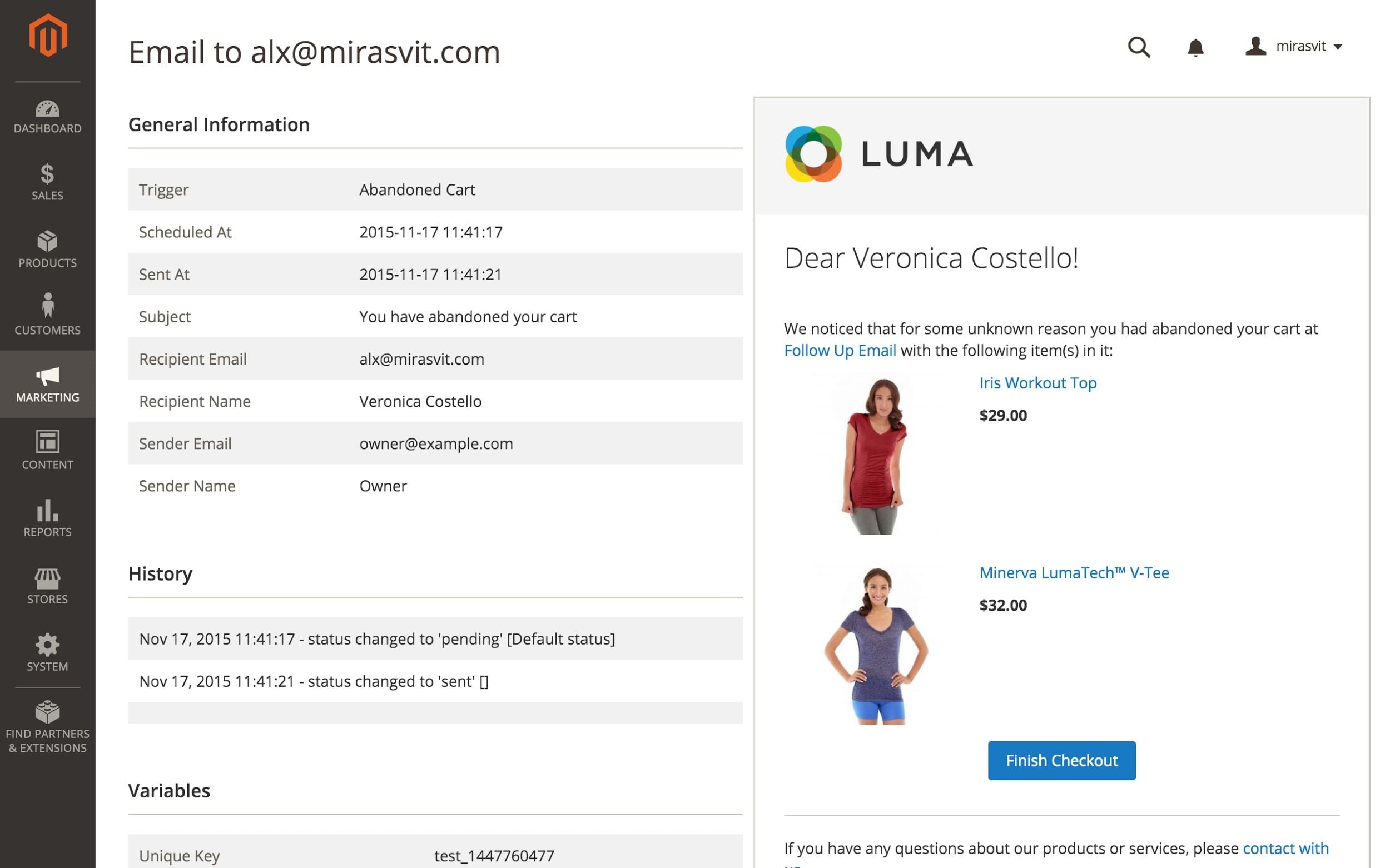
Replenishment reminders
One more great marketing technique that works similarly to the abandoned cart notifications: you notify your customers via email that it’s almost time to reorder some products from your catalogue when they are running low on supplies. You can set up those reminders based on the standard purchase cycle for a particular product or a customer’s average order frequency.
For our projects we have developed a tailored replenishment reminder solution that we customize depending on the client’s requirements. But, if you are looking for a ready made solution there is one of them that seems to be worth a try – Replenishment Automator. We can not guarantee it will work seamlessly because we have not reviewed its code (and we don’t know about future versions that may have changed features) but there aren’t too many options to choose from, aside from custom extension development. But you could try the above mentioned extension first.
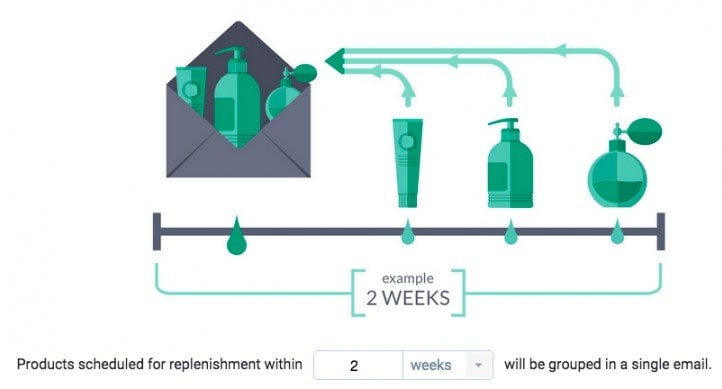
All in all, the main goal is to increase exposure, client relations, and revenue. While some of these suggestions may work perfectly for some Magento Stores, they may not work for others. But, that’s the magic of the internet these days, and where there’s a will, there’s a way, and as you can well imagine, our Magento development team has never been one to back down from a challenge. Feel free to reach out to us at any time with questions, comments, or concerns, and they’ll make sure that the effectiveness of your Magento store is among the best in the biz. 🙂




